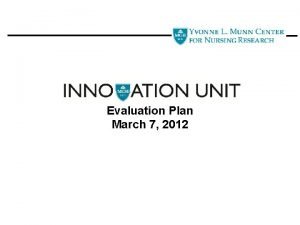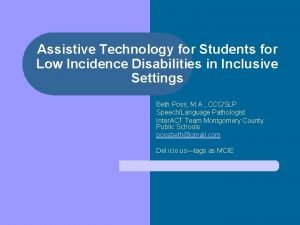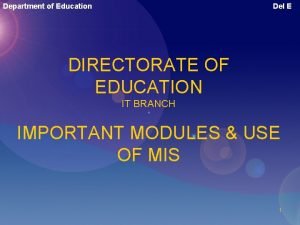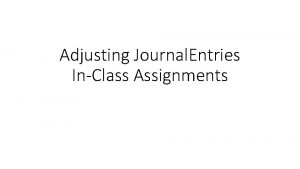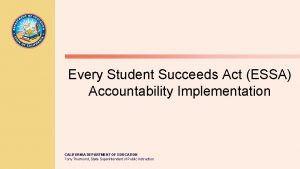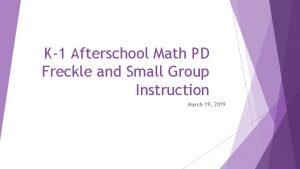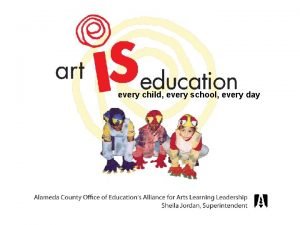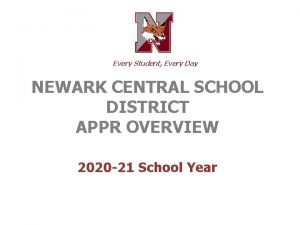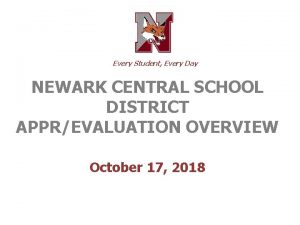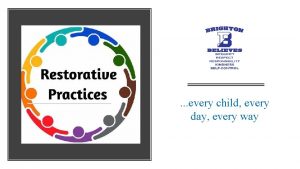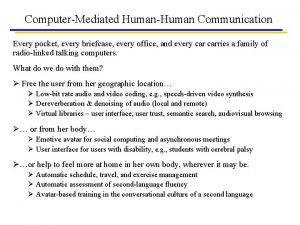Every Student Every School MARCH 2012 Module 2






































- Slides: 38

Every Student, Every School MARCH 2012 Module 2: Learning and support teams PUBLIC SCHOOLS NSW WWW. SCHOOLS. NSW. EDU. AU

Module Outcomes On completion of this module participants will understand the role of the learning and support team in: • enhancing the quality of the learning experience for every student • building each teacher’s capabilities for recognising, respecting and responding to the needs of every student • developing, implementing and monitoring whole school planning and support mechanisms • working collaboratively.

Accreditation Module 2, Learning and Support: Learning and Support Teams is NSW Institute Registered professional learning for the purposes of maintaining accreditation at Professional Competence. Participants will understand respond to the Professional Teaching Standards: • 6. 2. 6: Participate constructively in formal and informal professional discussions with colleagues • 6. 2. 7: Demonstrate a commitment to continuous professional learning by exploring educational ideas, issues and research.

Schools across Australia and beyond

Every Student, Every School Learning and Support t • • • Teaching and learning Curriculum Collaboration Accountability Teacher quality is the responsibility of every school and every teacher. PUBLIC SCHOOLS NSW WWW. SCHOOLS. NSW. EDU. AU

Induction modules: Learning and support PUBLIC SCHOOLS NSW WWW. SCHOOLS. NSW. EDU. AU

Learning and Support It is everyone’s responsibility to contribute to learning and support to enable the delivery of quality learning experiences for each student by maximising the teacher’s capability. PUBLIC SCHOOLS NSW WWW. SCHOOLS. NSW. EDU. AU

The NSW Public Schools’ framework for learning and support in every school Teacher quality Sustaining high quality professional learning and support for teachers and their school community to understand address the diverse learning needs of students. Accountability Meeting our obligations under the Disability Standards For Education. Teaching and learning Having high expectations for every student and providing adjustments to support the individual’s learning needs. framework for learning and support Curriculum Working towards high quality outcomes through rigorous, meaningful and dignified learning for every student. Collaboration Personalised learning and support plans developed and implemented in full collaboration with the student and/or their parent and carers.

Module 2: Learning and Support Teams Why do schools need a learning and support team? What is the work of the learning and support team? Who participates in the work of the learning and support team? Responding to changing needs

Learning and support teams Why do schools need a learning and support team? PUBLIC SCHOOLS NSW WWW. SCHOOLS. NSW. EDU. AU

Disability Standards for Education The Commonwealth Disability Standards for Education 2005 covers the following five areas: – enrolment, parent choice – access and participation – curriculum development, accreditation and delivery – student support services – elimination of harassment and victimisation Ø The Standards require schools to treat students with disabilities on the same basis as students without disability. Ø The Standards include obligations for making reasonable adjustments to the student’s learning program and /or learning environment. Ø Students with disability and their parents must be consulted on the personalised adjustments that will be provided.

Facts and figures: NSW public schools 2011 • 90, 000 students (12% of the student population) have a disability or additional needs • 35, 000 (4. 7% of the student population) have a confirmed disability against the criteria: intellectual, physical, hearing, vision, mental health or autism, receiving targeted support • 55, 000 (7. 5% of the student population) have additional needs relating to learning difficulties and/or behaviour disorders including ADHD, dyslexia, language or communication delay • 77% of students with disability, learning or behaviour difficulty are enrolled in regular schools Quality of the Learning Experience Students with disabilities and additional learning needs supported in every classroom and every school Teacher Capability Need to equip classroom teachers, support staff and their schools to understand the differences that students have in learning needs and build staff capacity to support them.

Evidence of the impact of effective learning and support teams

Learning and Support Teams Two versions of the video are provided below: mod 0201 a. flv (62 MB) https: //detwww. det. nsw. edu. au/media/downloads/intranet/lists/directoratesaz/disability/mod 0201 a. flv mod 0201 b. wmv (110 MB) https: //detwww. det. nsw. edu. au/media/downloads/intranet/lists/directoratesaz/disability/mod 0201 b. wmv

Learning and support teams Activity 1 Participants will watch the video and list key ideas presented in the video on the response sheet provided. In small groups of approximately 6: 1. Discuss the video clip, sharing each participant’s responses 2. Identify key messages, from the video and your own experience, about the role and function of learning and support teams 3. Report back the key messages from the video that had the greatest impact on the group.

Learning and support teams Facilitate and coordinate a whole school approach to improving the learning outcomes of every student Coordinate planning processes and resourcing for students with additional learning and support needs Design and implement the supports required to build teacher capacity to deliver adjustments that enable all students to access quality learning Develop collaborative partnerships with the school, parents/carers, other professionals and the wider school community

Effective learning and support teams bring together the efforts of the whole school and its community to… Enhance the quality of the learning experience Build the capabilities of staff

Personalised learning and support -a person centred approach LEARNING SUPPORT Assessment Communication Curriculum Health care Instruction Wellbeing Collaboration Participation Physical access A highly effective and integrated approach to learning and support takes account of high expectations and the interrelationships between individual student learning and support needs.

Learning and support teams assist in maximising educational experiences and outcomes for every student

Learning and support teams What is the work of the learning and support team? PUBLIC SCHOOLS NSW WWW. SCHOOLS. NSW. EDU. AU

• Prime responsibility for meeting the specific learning needs of students with difficulties in basic areas of learning lies with the school and the classroom teacher. • The school learning and support team plays a key role in ensuring that the specific learning needs of students experiencing difficulties in learning are met. Assisting Students with Learning Difficulties PD/2006/0342

The learning and support team facilitates: • implementation of the learning and support framework • a whole school approach to meeting the needs of every student Teaching and learning Accountability Curriculum Framework for learning and support Teacher quality Collaboration

Learning and support: a planning process EVALUATE ALLOCATE IDENTIFY Supporting students with additional learning needs and their teachers PRIORITISE ANALYSE

Learning and support: a planning process Identify the learning and support needs of individuals or groups IDENTIFY of students and the. EVALUATE professional learning Supporting students with needs of staff ALLOCATE additional learning needs and their teachers PRIORITISE ANALYSE

Learning and support: a planning process EVALUATE ALLOCATE Analyse evidence and data to understand more fully the reasons behind the need IDENTIFY Supporting students with additional learning needs and their teachers PRIORITISE ANALYSE

Learning and support: a planning process EVALUATE IDENTIFY Supporting students with additional learning needs and their teachers Prioritise the ALLOCATE learning and support needs of individuals or groups of students and the PRIORITISE professional learning needs of staff ANALYSE

Learning and support: a planning process EVALUATE IDENTIFY Supporting students with additional learning needs and their teachers Allocate resources to meet the learning and support needs of ALLOCATE ANALYSE individuals or groups of students and the professional learning needs of staff PRIORITISE

Learning and support: a planning process Regularly evaluate the efficacy of learning and support EVALUATE IDENTIFYfor students and the planned Supporting professional learning students with additional for staff and realign learning where necessary needs and ALLOCATE ANALYSE their teachers PRIORITISE

Learning and support teams Activity 2 Using the planning model presented in previous slides, each group will: 1. discuss how the learning and support team might use this planning process to guide their work 2. identify how each of the steps in the planning process (identify, analyse, prioritise, allocate, evaluate and discuss) involve systems and practices that support their assigned focus area 3. record the groups’ responses on Activity Worksheet 2.

Learning and support teams Who participates in the work of the learning and support team? PUBLIC SCHOOLS NSW WWW. SCHOOLS. NSW. EDU. AU

NSW Public Schools and support teams tres n e C d n a ls o o h c S n o ti a Distance Educ s l o s o l h o c o S ch e S d y a r r a T Pre d n o c e e S v C t artially selecti s omm i l a i S c e p Sp ch d n a u y l a n r Full u t l i u ty Sc oo Agric g arts n i m r o f s hool l l s nd per a o e v i t o a y g s o Cre l h c Techno S l e g Infan a r Langua t n ts Sc e Intensive English Centres arine C M hool s Speocrhtsnology Pri S chool For t l ori a r Specific Ru Supporti ty Music Purposes ng stude s t n r t A Sch s • w e i v t I i h ntellect t oo Crea • Menta ual disability l health a nd behav Students Comprehe ls iour need i n h o spital Publi nsive s and c Sch High Schoo ools ls s e r t n e s C e g n le tio l a o c C u d s E u l a p t n Environme Multi Cam

Learning and support team membership Contributors may include members of the school community with specific expertise For example: Core members Principal/nominee Executives Class Teachers Learning and support teacher Year advisor School counsellor Aboriginal education For example: Audiologist Community nurse Learning and support Community/family Curriculum support Student welfare Occupational therapist ESL Paediatrician Out of home care Physiotherapist Student services Other? Contributors may include other specialist expertise Speech pathologist Other members may include Parents/carers/students School learning support officers Others? Other ?

Learning and support teams Responding to changing needs PUBLIC SCHOOLS NSW WWW. SCHOOLS. NSW. EDU. AU

Learning and support teams: adapting, responding and supporting change 34 Current Context What are schools currently doing? New Opportunities Changes that will impact the work of the team Future Teams with the capacity to respond to change

Learning and Support Teams Responding to change • The role and function of learning and support teams will continue to evolve. They need structures and ways of working that are flexible and have the capacity to respond to changing school profiles and needs. • To optimise learning for every student, the challenge is to monitor emerging trends and changes that have the potential to affect the way that students learn and teachers teach. • Effective and responsive learning and support teams are prepared to review and refresh their practices and ways of working to meet the needs of the students.

Learning and support teams Facilitate and coordinate a whole school approach to improving the learning outcomes of every student Coordinate planning processes and resourcing for students with additional learning and support needs Design and implement the supports required to build teacher capacity to deliver adjustments that enable all students to access quality learning Develop collaborative partnerships with the school, parents/carers, other professionals and the wider school community

Learning and support teams Activity 3 1. Think about the operation of the learning and support team in your school 2. Reflect on what you have learnt through this module 3. Respond on Activity Sheet 3, to the 3 questions in the table header in relation to each function of a successful learning and support team. 4. Share your responses with your table group

Summary During this module we have explored the role and function of the learning and support team in: • enhancing the quality of the learning experience for all students • building each teacher’s capability to recognise, respect and respond to the needs of all students • developing, implementing and monitoring whole school planning and support mechanisms • working collaboratively.
 Poland national anthem lyrics
Poland national anthem lyrics March 7, 2012
March 7, 2012 C device module module 1
C device module module 1 Every nation and every country
Every nation and every country Empower every person and every organization
Empower every person and every organization Every knee shall bow every tongue confess
Every knee shall bow every tongue confess Every rotarian every year
Every rotarian every year Every nation and every country
Every nation and every country Every picture has a story and every story has a moment
Every picture has a story and every story has a moment Every child every day
Every child every day Edudel student module
Edudel student module Student module edudel
Student module edudel Every student deserves a great teacher
Every student deserves a great teacher Molly mocha employs one college student every summer
Molly mocha employs one college student every summer Every student succeeds act california
Every student succeeds act california Tony essa
Tony essa How _________ your last weekend?
How _________ your last weekend? What did you do over the weekend
What did you do over the weekend National student clearinghouse student tracker
National student clearinghouse student tracker Class maths student student1 class student string name
Class maths student student1 class student string name National student clearinghouse student tracker
National student clearinghouse student tracker Freckle student dashboard-student.freckle.com/#/login
Freckle student dashboard-student.freckle.com/#/login Hi teacher good morning
Hi teacher good morning Sls student learning space
Sls student learning space The selfish giant every afternoon
The selfish giant every afternoon What is a witches favorite school subject
What is a witches favorite school subject Simple present tense review
Simple present tense review If the books have been cataloged
If the books have been cataloged Grihalakshmi magazine march 2019
Grihalakshmi magazine march 2019 Where was vincent van gogh born
Where was vincent van gogh born Genetic engineering conclusion
Genetic engineering conclusion March 1917 revolution
March 1917 revolution Sherman's march to the sea route
Sherman's march to the sea route Sherman's march significance
Sherman's march significance Path of sherman's march to the sea
Path of sherman's march to the sea Path of sherman's march to the sea
Path of sherman's march to the sea 9 line medevac
9 line medevac Aleida march de la torre
Aleida march de la torre February and march season
February and march season

